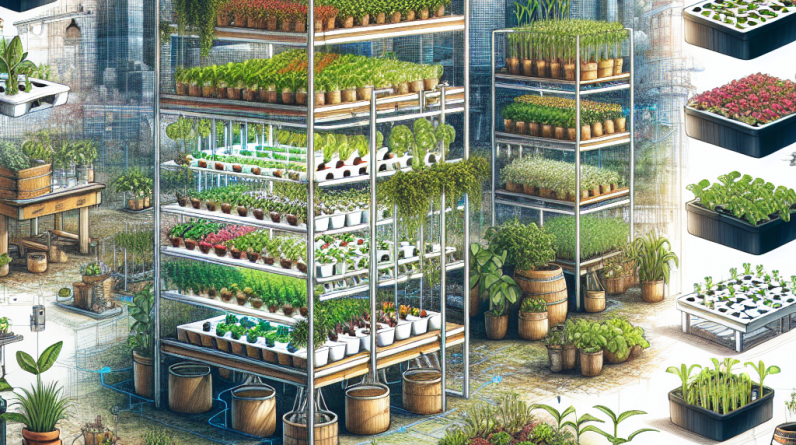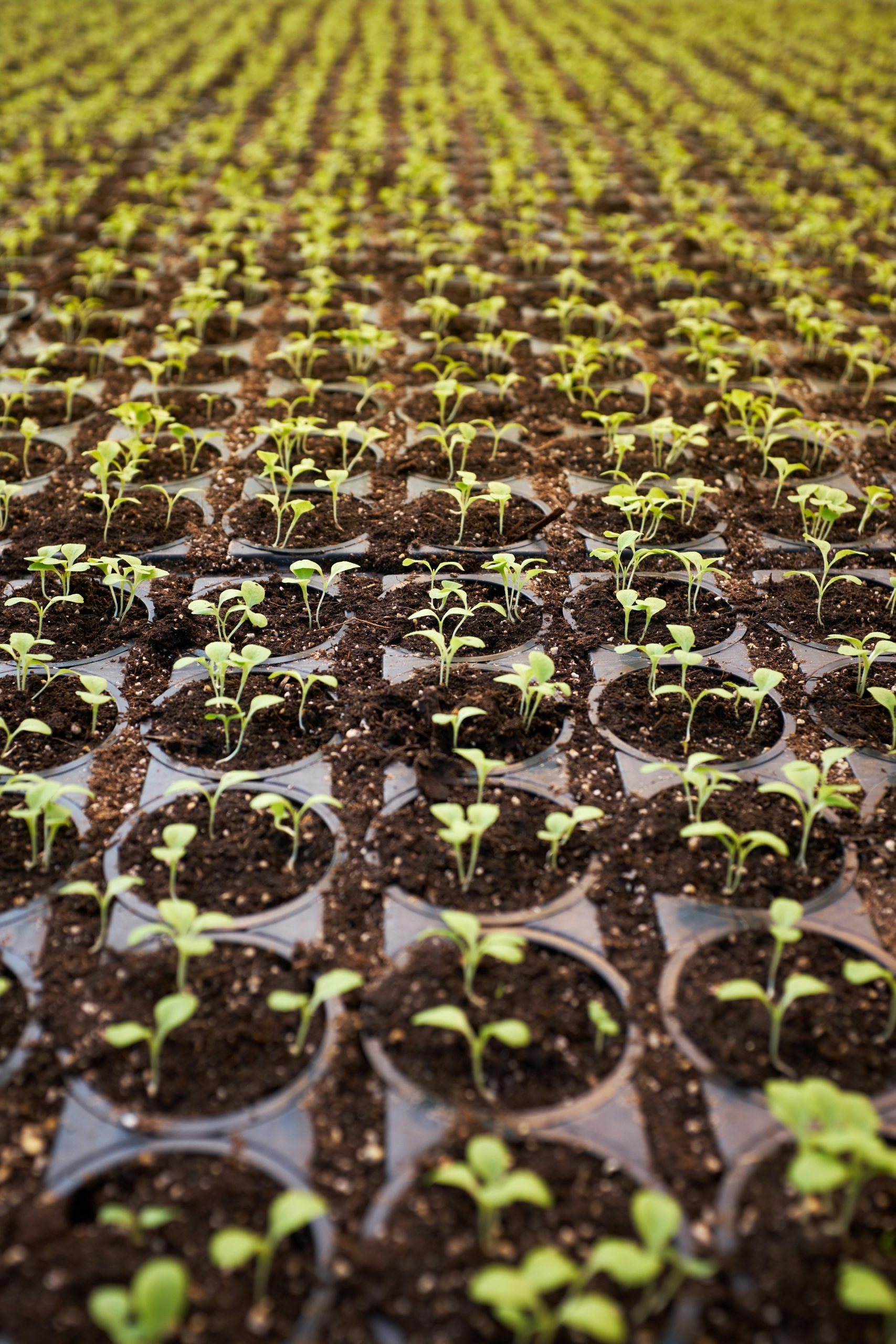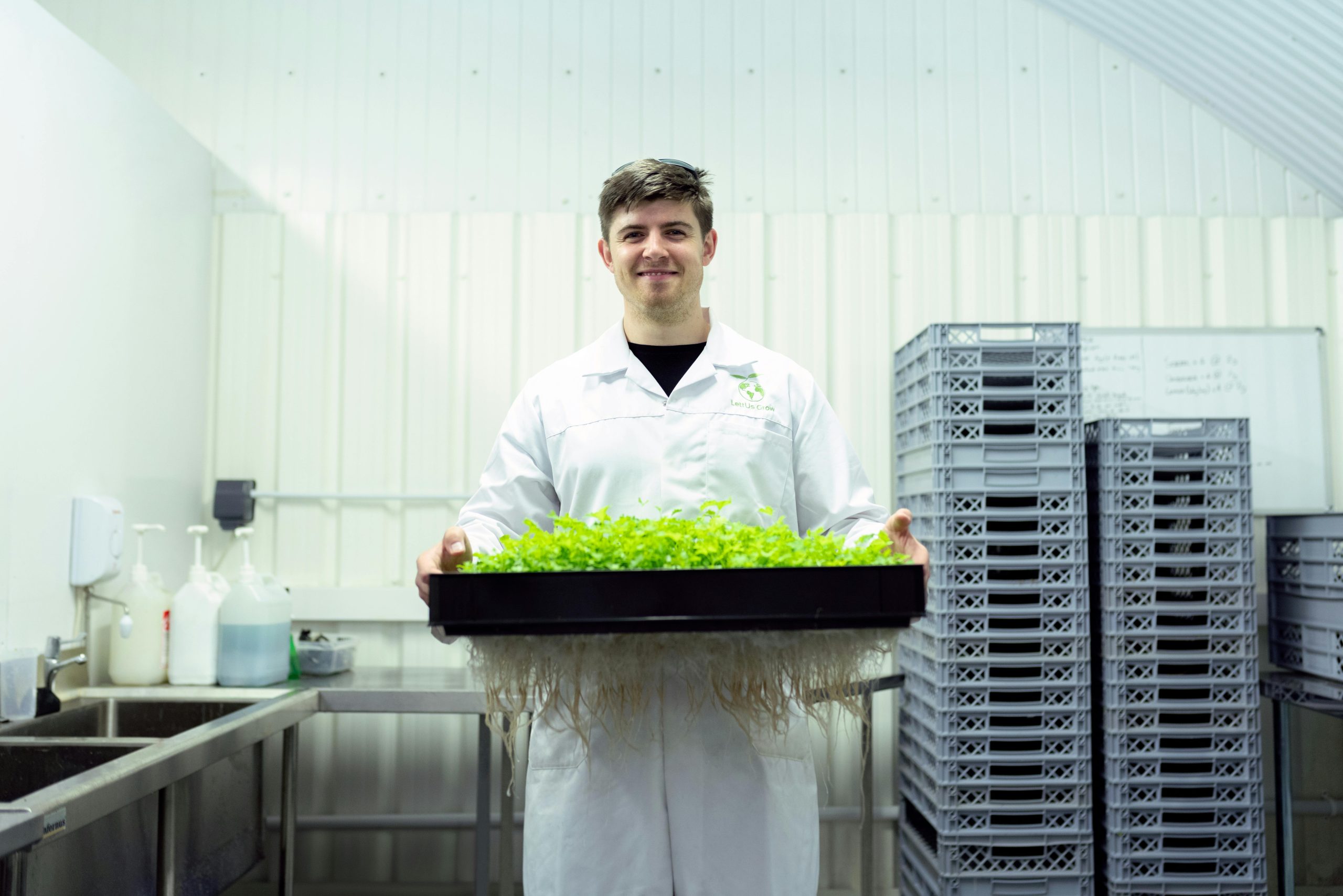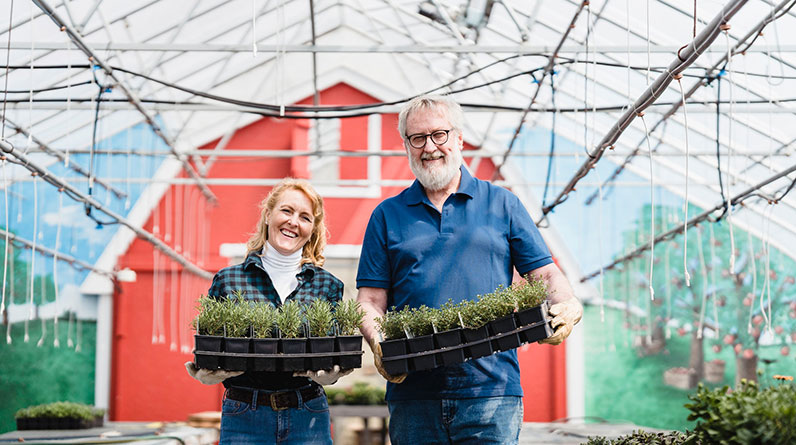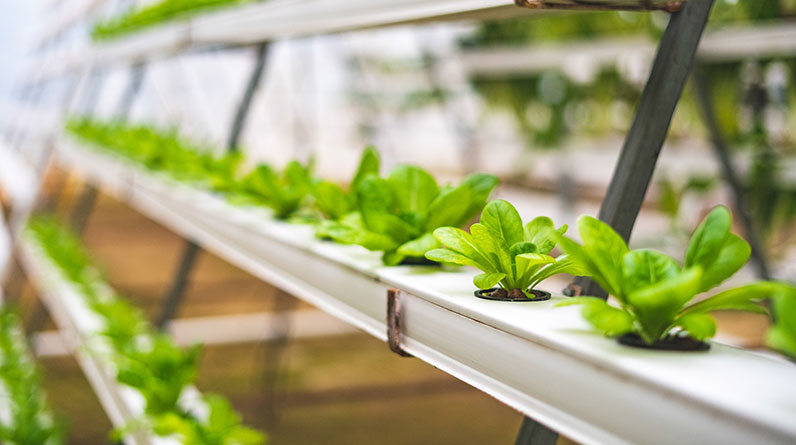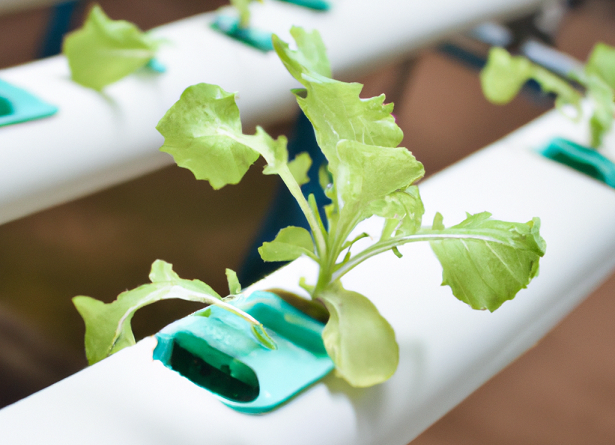
Hydroponics is a method of growing plants without soil, using nutrient-rich water instead. This innovative technique has been gaining popularity in recent years due to its numerous benefits. With hydroponics, plants can grow faster and healthier, using less water and space than traditional farming methods.
The beauty of hydroponics lies in its versatility: it can be used to grow a wide variety of plants, from leafy greens to fruiting crops. The system can be set up indoors or outdoors, making it ideal for urban gardening or areas with limited space.
Hydroponics also offers greater control over the growing environment, allowing farmers to adjust factors such as temperature, humidity, and nutrient levels. This precision leads to higher crop yields and better quality produce.
In addition, hydroponics is a more sustainable farming method, as it uses up to 90% less water than traditional farming and eliminates the need for harmful pesticides and herbicides.
As more people become interested in sustainable living and local food production, hydroponics is becoming a popular solution for growing fresh, healthy produce year-round. Whether you’re a hobbyist or a commercial farmer, hydroponics offers a new way to connect with nature and produce food in a more efficient and environmentally-friendly way.
In this series, we’ll explore the many facets of hydroponics, from the different types of systems available to the ideal crops to grow. Join us on this exciting journey as we discover the endless possibilities of hydroponics.
What Is Hydroponics?
Hydroponics is a method of growing plants that does not rely on soil. Instead, plants are grown in a nutrient-rich solution that is circulated around their roots. This method of growing plants has become increasingly popular in recent years, as it offers a number of advantages over traditional soil-based methods.
One of the biggest advantages of hydroponics is that it allows for greater control over the growing environment. With soil-based methods, it can be difficult to control factors such as pH levels, nutrient levels, and water quality. With hydroponics, these factors can be precisely controlled, allowing for optimal growing conditions.
Another advantage of hydroponics is that it requires less water than traditional soil-based methods. This is because the nutrient-rich solution used in hydroponics is recirculated, rather than being absorbed by the soil. This makes hydroponics a more sustainable and environmentally-friendly method of growing plants.
Hydroponics is also a more space-efficient method of growing plants. Because plants are grown in nutrient-rich solution rather than soil, they can be grown in smaller spaces. This makes hydroponics ideal for urban environments, where space is often at a premium.
Overall, hydroponics is a highly effective method of growing plants that offers a number of advantages over traditional soil-based methods. Whether you are a seasoned gardener or a beginner, hydroponics is definitely worth considering as a way to grow your plants.
Benefits
Hydroponics is a method of growing plants without soil, using nutrient-rich water instead. This innovative technique has been gaining popularity in recent years, and for good reason. Hydroponics offers a wide range of benefits that traditional soil-based gardening simply cannot match.
One of the main benefits of hydroponics is its high efficiency. Because the plants are grown in water, they can absorb nutrients much more quickly and efficiently than they can in soil. This means that hydroponic plants can grow up to 50% faster than their soil-grown counterparts, and they require less water and fertilizer to do so.
Another major advantage of hydroponics is its versatility. With hydroponics, you can grow plants anywhere, regardless of the quality of the soil or the climate. This makes hydroponics ideal for urban gardening, where space is at a premium, as well as for growing crops in areas with poor soil quality or harsh weather conditions.
Hydroponics is also more environmentally friendly than traditional gardening methods. Because hydroponic plants require less water and fertilizer, they produce less runoff and require fewer pesticides and herbicides. Additionally, hydroponic systems can be designed to recycle water and nutrients, further reducing waste.
Finally, hydroponics offers a high degree of control over the growing environment. With hydroponics, you can adjust the nutrient levels, pH, and temperature of the water to ensure optimal growing conditions for your plants. This level of control allows you to grow healthier, more productive plants, and to experiment with different growing techniques and plant varieties.
In conclusion, hydroponics offers a wide range of benefits that make it an attractive option for gardeners and farmers alike. From increased efficiency and versatility to environmental sustainability and greater control over the growing environment, hydroponics is a game-changing technology that is revolutionizing the way we grow plants.
Types
Hydroponics is a growing method that allows plants to grow without soil. Instead, they are grown in nutrient-rich water solutions that provide all the necessary nutrients for plant growth. There are several types of hydroponic systems that are commonly used in commercial and home gardening.
One type of hydroponic system is the deep water culture system. In this system, plants are suspended in a nutrient-rich solution that is aerated to provide oxygen to the roots. This system is easy to set up and maintain, making it a popular choice for home gardeners.
Another type of hydroponic system is the nutrient film technique. In this system, a thin film of nutrient solution is continuously flowing over the roots of the plants. This system is ideal for growing plants with shallow roots, such as lettuce and herbs.
A third type of hydroponic system is the ebb and flow system. In this system, plants are grown in containers that are periodically flooded with nutrient solution. This system is ideal for growing larger plants, such as tomatoes and cucumbers.
A fourth type of hydroponic system is the aeroponic system. In this system, plants are suspended in air and sprayed with a nutrient-rich mist. This system is ideal for growing plants with delicate roots, such as strawberries and orchids.
In conclusion, hydroponics offers a variety of systems that can be used to grow plants without soil. Each system has its own advantages and disadvantages, making it important to choose the right system for your specific needs. By understanding the different types of hydroponic systems available, you can choose the one that is best suited for your needs and start growing your own plants today.
Nutrients
When it comes to hydroponics, nutrients are essential for the growth and development of plants. In traditional soil-based farming, plants obtain nutrients from the soil. In hydroponics, however, nutrients are added directly to the water solution that the plants are grown in.
There are three primary nutrients that plants require: nitrogen, phosphorus, and potassium. These are often referred to as NPK. Nitrogen is essential for leaf growth, phosphorus is necessary for root development, and potassium aids in the plant’s overall health and resistance to disease.
Aside from the primary nutrients, plants also require secondary nutrients such as calcium, magnesium, and sulfur. These nutrients play a crucial role in the plant’s growth and development.
It’s important to note that the nutrient requirements for plants will vary depending on the stage of growth. For example, during the vegetative stage, plants require more nitrogen to support leaf growth. During the flowering stage, however, plants require more phosphorus to support the growth of buds.
In hydroponics, nutrients are typically added to the water solution in the form of a liquid fertilizer. It’s important to follow the manufacturer’s instructions when adding nutrients to ensure that the plants receive the correct amount.
In addition to liquid fertilizers, there are also organic nutrient options available for hydroponics. These include things like compost tea and fish emulsion.
Overall, providing plants with the correct nutrients is essential for success in hydroponics. By understanding the nutrient requirements of different plants and stages of growth, growers can ensure that their plants are healthy and thriving.
<pH
pH is a crucial aspect of hydroponics that every grower should understand. It refers to the measure of acidity or alkalinity of a solution and is measured on a scale of 0 to 14. A pH of 7 is considered neutral, while anything below 7 is acidic, and anything above 7 is alkaline.
Maintaining the correct pH level is essential for the healthy growth of plants in a hydroponic system. Most plants thrive in a slightly acidic environment, with a pH range of 5.5 to 6.5. However, different plants have varying pH requirements, and it is crucial to research the ideal pH range for the specific plants you are growing.
The pH level of a hydroponic system can be adjusted using pH up or pH down solutions. These solutions are added to the nutrient solution to raise or lower the pH level. It is essential to monitor the pH level regularly using a pH meter or test kit to ensure it remains within the desired range.
Fluctuations in pH levels can have a significant impact on plant growth and nutrient uptake. If the pH level is too high or too low, plants may experience nutrient deficiencies or toxicities, leading to stunted growth and poor yields.
In conclusion, maintaining the correct pH level is crucial for the success of a hydroponic system. By monitoring and adjusting the pH level as needed, growers can ensure their plants receive the nutrients they need to thrive.
Lighting
When it comes to hydroponics, lighting is a crucial element that can make or break your plants’ growth and development. The right lighting can help your plants thrive, while inadequate lighting can lead to stunted growth or even plant death.
One of the most important factors to consider when choosing lighting for your hydroponic setup is the type of bulb. LED lights are becoming increasingly popular among hydroponic growers due to their energy efficiency and long lifespan. They also emit less heat than traditional bulbs, which can help to keep your plants from overheating.
Another key consideration is the color temperature of your lighting. Different stages of plant growth require different types of light, with blue light being ideal for vegetative growth and red light being better for flowering. Some growers even use a combination of blue and red lights to provide a full spectrum of light for their plants.
In addition to the type and color of your bulbs, it’s also important to consider the intensity and duration of your lighting. Most plants require at least 12 hours of light per day, but some may need up to 18 hours. It’s also important to ensure that your lights are positioned at the correct distance from your plants to avoid burning or shading.
Overall, lighting is a crucial component of any successful hydroponic setup. By choosing the right bulbs, color temperature, intensity, and duration, you can help your plants grow strong and healthy, ensuring a bountiful harvest.
Pests
When it comes to hydroponics, pests can be a major issue. Without the use of pesticides, many hydroponic growers struggle to keep their plants safe from pests. However, there are several natural ways to control pests in hydroponics.
One of the most effective ways to control pests in hydroponics is through the use of beneficial insects. These insects, such as ladybugs and lacewings, prey on common hydroponic pests like aphids and spider mites. By introducing these insects into your hydroponic system, you can create a natural balance that will keep pests under control.
Another natural way to control pests in hydroponics is through the use of essential oils. Many essential oils, such as peppermint and eucalyptus, have insecticidal properties that can repel or kill common hydroponic pests. By adding a few drops of essential oil to your hydroponic system, you can deter pests from attacking your plants.
In addition to these natural methods, there are also several cultural practices that can help prevent pests in hydroponics. These include maintaining a clean growing environment, using disease-resistant plant varieties, and rotating crops to prevent the buildup of pest populations.
Overall, while pests can be a challenge in hydroponics, there are several natural and effective ways to control them. By using beneficial insects, essential oils, and cultural practices, you can keep your hydroponic plants healthy and pest-free.
Maintenance
Maintaining a hydroponic system is crucial to ensure its success and longevity. Regular maintenance helps to prevent problems such as nutrient imbalances, pest infestations, and equipment failures.
One important aspect of maintenance is monitoring the pH levels of the nutrient solution. pH levels that are too high or too low can lead to plant stress and poor growth. It is recommended to check the pH levels at least once a week and adjust as necessary.
Another key factor in hydroponic maintenance is ensuring proper nutrient levels. The nutrient solution should be changed every two to three weeks to prevent nutrient imbalances and buildup. Additionally, it is important to regularly check the nutrient levels and adjust as needed.
Pest control is also a critical component of hydroponic maintenance. Since hydroponic systems are often indoors, pests can easily infest the plants. Regular inspections and treatments can help prevent infestations and ensure healthy plant growth.
Equipment maintenance is also important to prevent failures that can lead to crop loss. Regularly cleaning and inspecting pumps, filters, and other equipment can help prevent malfunctions and prolong their lifespan.
In conclusion, proper maintenance is essential for a successful hydroponic system. By monitoring pH levels, nutrient levels, pest control, and equipment maintenance, growers can ensure healthy plant growth and a bountiful harvest.
In conclusion, Hydroponics is a fascinating and innovative way to grow plants without soil. This post has covered a range of topics related to Hydroponics, including its definition and benefits, different types of Hydroponic systems, the importance of nutrients and pH levels, the role of lighting, and how to deal with pests and maintenance.
One of the key benefits of Hydroponics is its ability to produce higher yields of crops in a smaller space, making it an attractive option for urban farming and sustainable agriculture. Additionally, Hydroponics can be a more efficient and environmentally friendly way to grow plants, as it uses less water and eliminates the need for harmful pesticides and fertilizers.
When it comes to choosing a Hydroponic system, there are many factors to consider, such as the type of plants you want to grow and the space available. It’s also important to monitor nutrient levels and pH regularly to ensure optimal growth.
In terms of future developments and trends, Hydroponics is likely to continue to grow in popularity as more people become interested in sustainable agriculture and urban farming. Additionally, advances in technology and automation may make Hydroponics even more efficient and cost-effective in the years to come.
Finally, we encourage readers to leave any comments or feedback on this post. If you’re interested in trying Hydroponics yourself, be sure to do your research and start small. With some patience and dedication, you can enjoy the benefits of this innovative and exciting way to grow plants. Thank you for reading!


